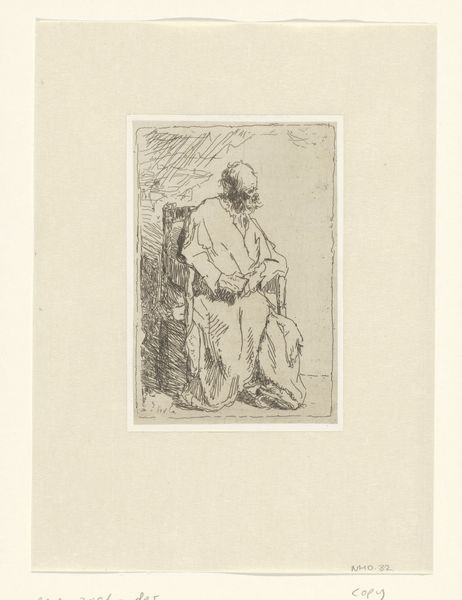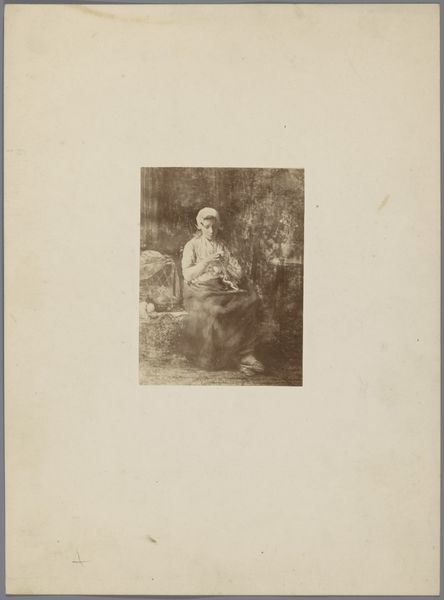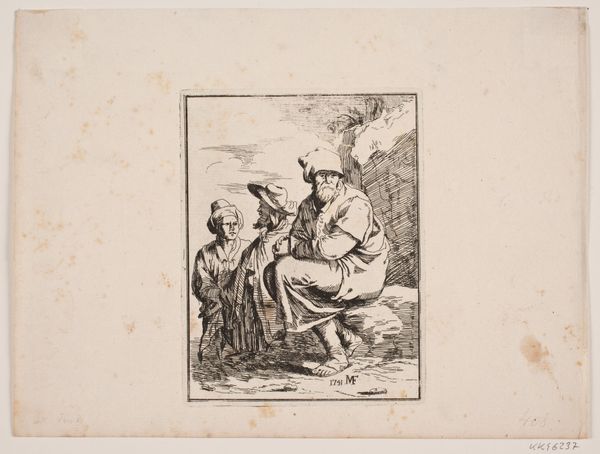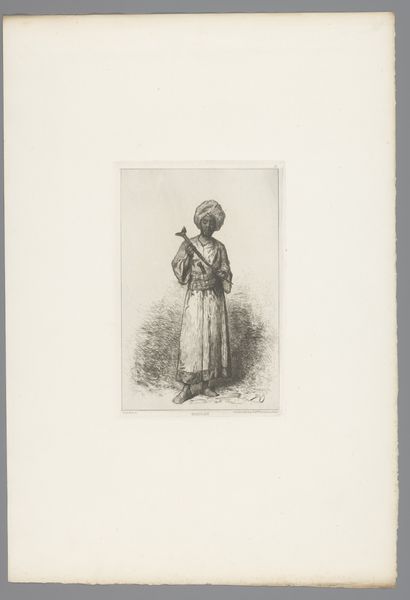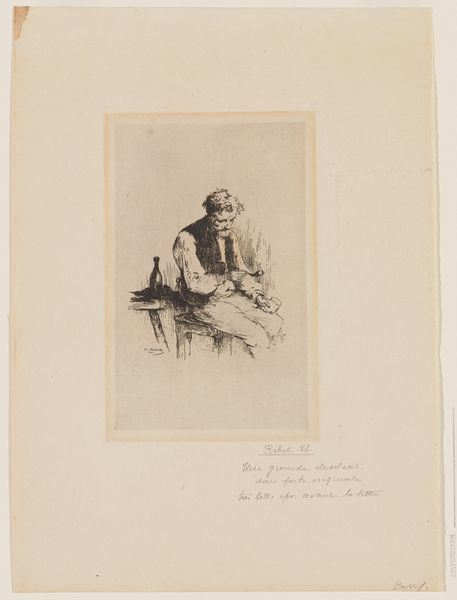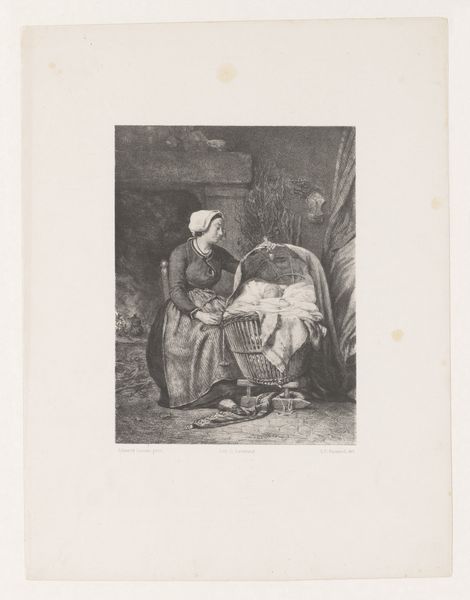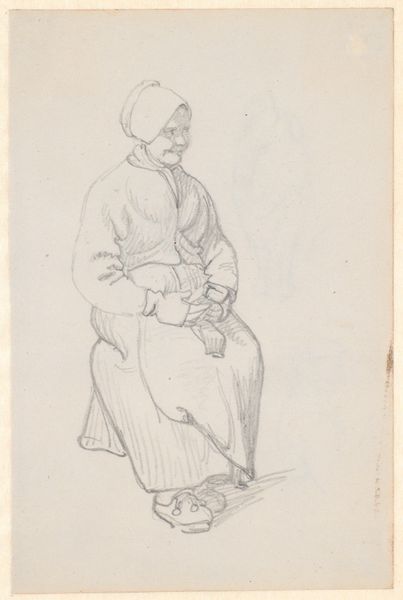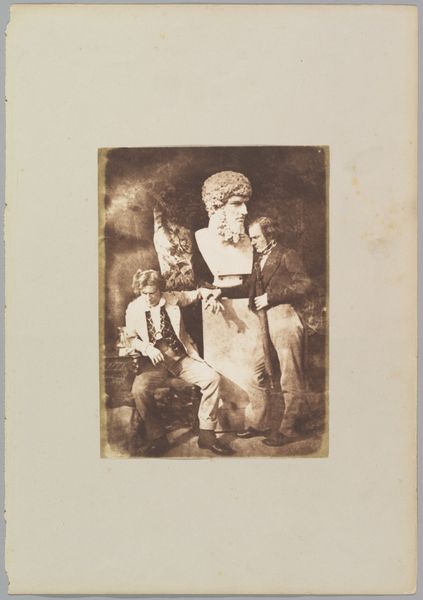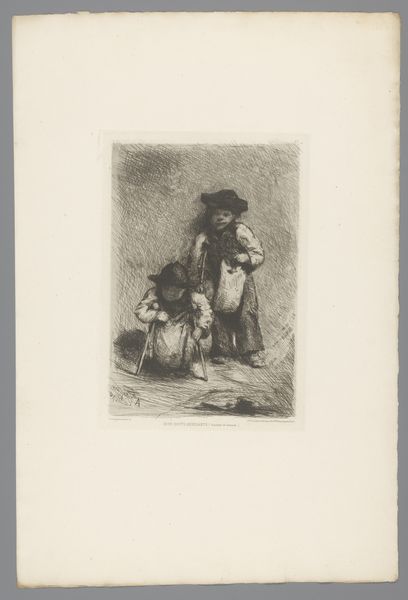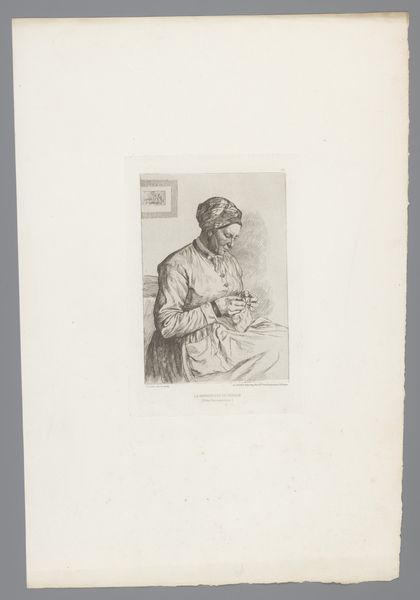
drawing, etching, paper
portrait
drawing
etching
paper
realism
Dimensions: height 279 mm, width 199 mm
Copyright: Rijks Museum: Open Domain
Curator: Charles Monginot’s etching from 1881, "Hunter with Dead Hare," is rendered in fine detail on paper. It depicts a seated man cradling his kill. What strikes you most upon viewing it? Editor: There's a strange tenderness despite the violence implicit in the title. The rough strokes making up his clothing hint at coarse material, while the dead hare seems oddly nestled in his arms. There’s a contrast that interests me immediately. Curator: Yes, the imagery presents a stark duality. The hare, a symbol of vulnerability and swiftness, is juxtaposed with the hunter, who embodies dominion and earthly necessity. The setting also plays a part; note the dense undergrowth rendered with frenetic marks behind the figure. Editor: You're right. The etching style, all those frantic lines, contribute to the feeling of the hunter being embedded *within* his environment, almost one with it. What was Monginot saying about this relationship? About what is consumed and what does the consuming? I'm curious about the paper; is it laid or wove? Curator: That’s key: consider also that rabbits and hares often signify abundance and cycles of life. Here, the dead hare isn't just a prize but represents mortality's interruption of those natural rhythms, both ecological and existential. Monginot's choice to depict this through etching, a method that requires repeated immersion and acid’s “biting” action on the metal plate, suggests a prolonged and somewhat torturous artistic engagement. Editor: Interesting point about the etching process mirroring a kind of extended engagement with death. It makes me think about who produced this paper in 1881? How would its production and circulation be linked to notions of resource management and the societal role of the hunter figure in this context? Curator: Those are pertinent questions indeed. I think the beauty of this lies not just in its immediate visual impact, but in how it makes us contemplate the tangled web of life, death, and representation across cultures. Editor: And for me, considering its materiality allows me to delve more into social relationships connected to consumption, labor and resources, highlighting Monginot's complex portrait of rural life. Thank you!
Comments
No comments
Be the first to comment and join the conversation on the ultimate creative platform.
